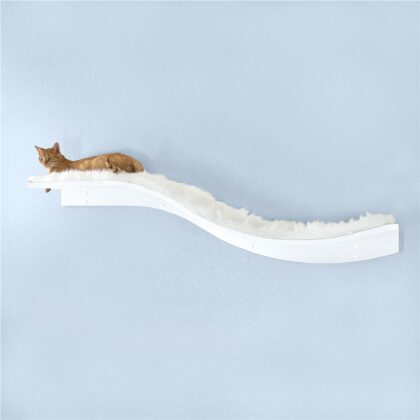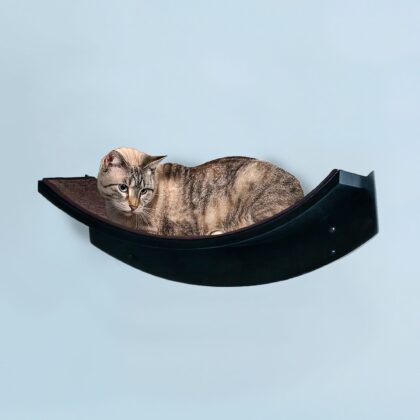
Understanding Your Cat’s Five Senses
Cats depend on their senses to aid in their survival and their senses are very different from a human’s fives senses. Learning more about your cat’s five senses can help bring you and your cat closer together. Curious about the differences? The Refined Feline has some answers for you.
Welcome To The World Of Cats
Cats use their senses differently from humans and we, as pet parents, should be aware of these differences to be better clued into their feelings and actions. Cats are very instinctual and use smell, sight, hearing, taste, and touch to guide them throughout their day. Their basic functions and needs are very different from ours. This is important to remember when interacting with your cat to build more trust. We’ll take a look at each of the five senses to gain more knowledge on how your cat uses their five senses every day.
Smell
Cats will utilize their sense of smell for almost everything and it is the sense they use the most. It’s also their most powerful sense and is around 40 times stronger than a human’s sense of smell. Cats will use their sense of smell to recognize friends, foes, and more. With each sniff they take, they can discover potential prey, spoiled food, and where their home is if they get lost outdoors. No matter where you’ve been during the day, your cat most likely greets you by smelling you. They recognize your smell but are also smelling all the places and things you’ve been around. Their smell is so keen that they will recognize you by your smell before recognizing your face!
Cats can also “smell” without the use of their nose! They have a unique olfactory receptor called a vomeronasal organ. This organ is on the roof of their mouths, allowing them to pick up on chemical signatures, like pheromones. If you ever see your cat “smelling” something with their mouth open, this is most likely them using their vomeronasal organ. They may even leave their mouth open for a few seconds afterward to fully “process” the scent.
Cats will rely on scent markers located on their body too. This is why they rub on their cat tower, furniture, walls, and even people. Cats do this as a means of marking territory too, instead of urination. Most often they use scent markers located by their mouths, which is why they may rub their face against items in your home. This alerts other cats that it belongs to them, whether it’s cats in the same household or outdoors.
Sight
Although cats can’t see in total darkness, their eyesight in darker light is still better than ours. Cats primarily hunt during dusk and dawn, so their eyesight is catered to low-light conditions. They have more light-sensitive photoreceptors than humans, and can see around six to eight times better than us! The shape of their eye and the shiny membrane, called tapetum lucidum, also helps to boost their low-light eyesight.
With better eyesight in lower light conditions, cats can’t see in the distance too well. The best distance for them is about twenty feet away, where everything is in the best focus and clarity. While a human’s peripheral vision is 180 degrees, a cat’s peripheral vision is 200 degrees because of the eye’s shape and location.
While most people believe cats are color blind, this is a myth. It’s thought that cats can see some color, but simply have fewer color-sensitive receptors than humans. So, cats can see most colors but red-green can be tricky for them. The best way to envision how cats see color is by seeing what a human who is red-green color blind sees. This would mean that red-colored objects appear more greenish to cats. Other colors like brown appear more grayish and would be harder to decipher for felines.
Hearing
Cats are predators, so it’s no surprise that their ears are designed to pick up minuscule sounds from small prey. Their large triangular-shaped ears help them pick up sound, and the cone-shaped outer ear amplifies the sound. They can also rotate their ears to better discern the location of their prey. The vibrations of the sounds as they travel down their large ears help them find and stalk their prey for maximum efficiency. Since most of their prey make higher pitched noises, it makes sense that a cat’s hearing is better at hearing them.
Although a cat can hear higher-pitched sounds better than a human, they hear lower-pitched sounds just as well as humans. Humans hear frequencies around 20,000 Hz, while cats can hear upwards of 64,000 Hz. It’s thought that cats can hear these higher pitched frequencies even better than dogs!
Related: Cat Quiz – How Much Do You Really Know About Cats?
Touch
Cats also rely on their sense of touch for a myriad of reasons. It can help them detect prey’s movements or even if a predator is coming toward them. They rely the most on their whiskers, which are thicker hair follicles that are more sensitive to movements. Whiskers are not only on their cheeks and above their eyes, but also near their forelegs, chin, and ears. Whiskers are similar to a cat’s fur coat but come from a deeper skin layer. Touching objects with their whiskers allow cats to learn more about the items. It can range from the object’s temperature to its texture, which can clue cats in on what’s alive and what isn’t. A cat’s whiskers are comparably as sensitive as a human’s fingers. Touching a cat’s whiskers will also trigger them to blink as a protective measure.
Almost equally important to a cat’s sense of touch is its paw pads. A cat’s pads are covered in nerve receptors, which will send vital information to the brain. This allows cats to navigate different terrains effortlessly and check out varying objects. Their paw pads are so sensitive, that they can even pick up sound vibrations through them!
Taste
When compared to a cat’s other senses, their sense of taste is at the bottom of the list. With only 500 taste buds blanketing their tongue, it pales in comparison to a human’s 9,000 taste buds. Since cats are almost pure carnivores, though, they don’t necessarily need a ton of taste buds. Cats are thought to not taste sweetness, among other flavors. With their sense of smell being so high, they tend to rely on that rather than taste alone to guide them on what to eat.
The lack of taste buds still doesn’t stop cats from becoming picky eaters, though. They can still develop a preference for certain textures and tastes, making it difficult to find a food they like. Once you do find something they like, it will inevitably change in a few months anyway. Cats do seem to shy away from more bitter foods, though. It is thought that it’s an instinctual response to deter them from accidentally ingesting poisonous or toxic materials.
Everything You Need To Know About A Cat’s Five Senses
Did you know some of these fun facts and differences in a cat’s five senses? You’re now equipped to understand how your cat processes the world. This is helpful for bonding with your cat as you’ll start seeing the world through their eyes, even if their eyesight isn’t so good!










